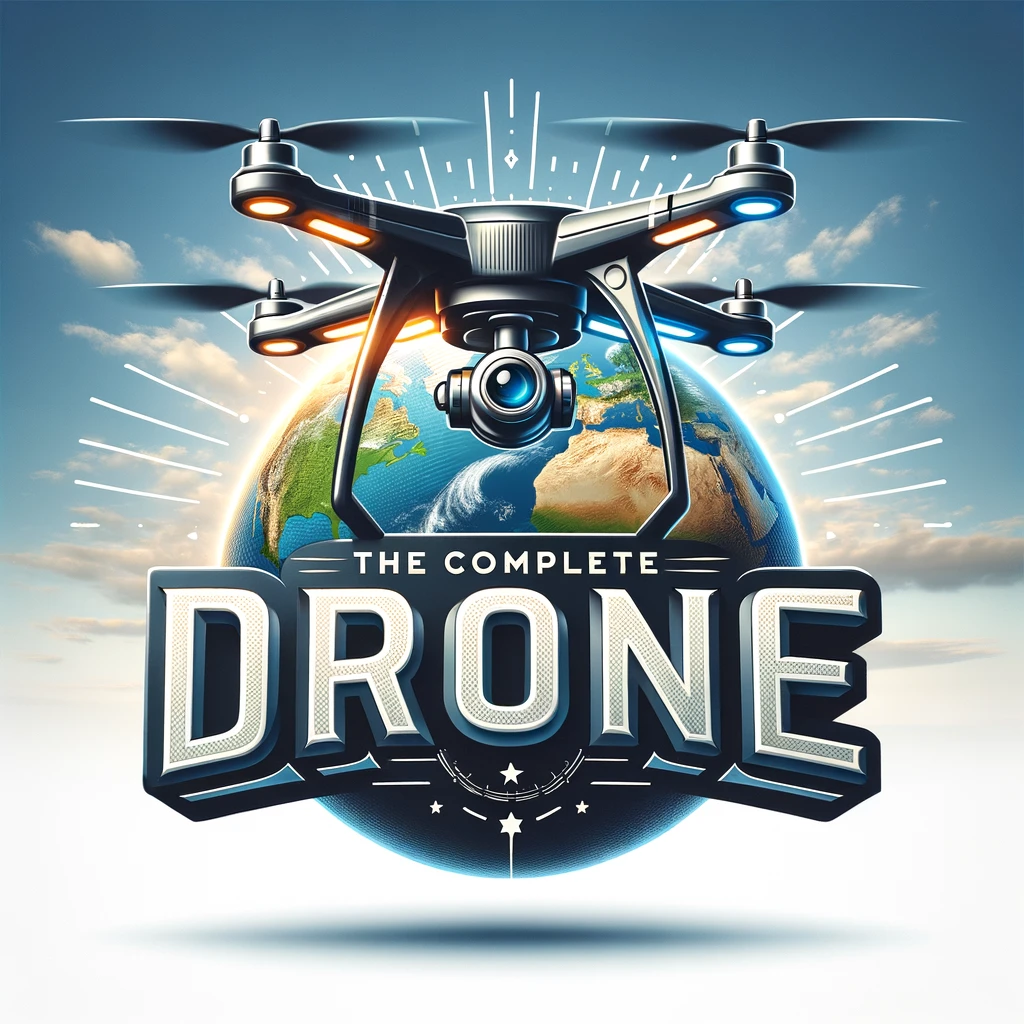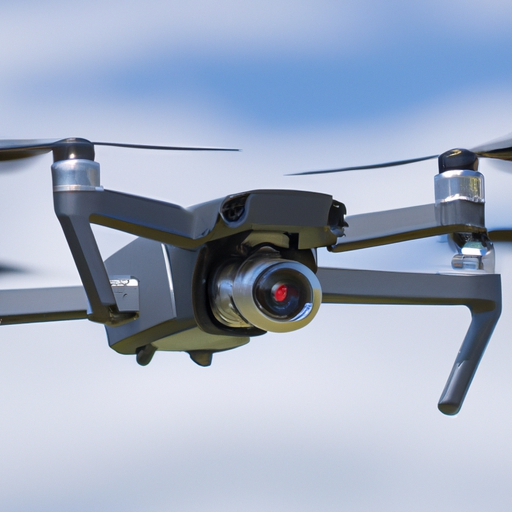Have you ever wondered what sets apart a drone from a quadcopter? Are they interchangeable terms, or is there a significant distinction between the two? In this article, we will explore the nuances between drones and quadcopters, clarifying the subtle differences to help you navigate the world of remote-controlled flying machines. So, fasten your seatbelt and get ready to soar into the captivating realm of aerial technology!
Definition of a Drone
A drone is an unmanned aircraft that is capable of flying autonomously or remotely controlled by a pilot on the ground. Drones are also known as unmanned aerial vehicles (UAVs) and have become increasingly popular in recent years due to advancements in technology. These devices can vary in size, from small handheld drones to larger, more sophisticated models used for commercial purposes. Drones are equipped with various sensors, cameras, and other technologies that allow them to capture images and videos, collect data, and perform a wide range of tasks.
Definition of a Quadcopter
A quadcopter, on the other hand, is a type of drone that has four rotors arranged in a symmetrical pattern. This configuration gives quadcopters the ability to hover, take off, and land vertically, making them highly maneuverable and versatile. The term “quadcopter” is derived from the Latin word “quad” meaning four and “copter” referring to a rotorcraft. The four rotors of a quadcopter can be independently controlled to achieve stability and precise control during flight.
Design and Configuration
Types of Drones
When it comes to design and configuration, drones can be classified into various types based on their intended use, size, and capabilities. Some common types of drones include fixed-wing drones, rotary-wing drones, traditional quadcopters, hexacopters, and octocopters.
Types of Quadcopters
Quadcopters, as mentioned earlier, are a specific type of drone configuration with four rotors. They can be further classified into different categories based on their number of rotors and flight characteristics.
Fixed-Wing Drones
Fixed-wing drones, also known as fixed-wing unmanned aerial systems (UAS), are designed to resemble traditional airplanes. These drones have a rigid wing structure and rely on forward motion and lift generated by their wings to achieve flight. Fixed-wing drones are typically used for long-distance surveillance, mapping, and aerial inspections, as they offer greater endurance and higher speeds compared to quadcopters.
Rotary-Wing Drones
Rotary-wing drones, such as helicopters, are equipped with rotating blades or rotors that generate lift and allow vertical takeoff and landing. Unlike fixed-wing drones, rotary-wing drones are capable of hovering in one position, making them suitable for tasks that require stability and precise control. These drones are commonly used in applications such as search and rescue operations, agricultural monitoring, and cinematography, where maneuverability and versatility are crucial.
Traditional Quadcopters
Traditional quadcopters, as the name suggests, are the most common and widely used type of quadcopter configuration. With four rotors, these drones have a balanced design that provides stability and agility during flight. Traditional quadcopters are popular for recreational purposes, aerial photography, and filmmaking, as they offer a user-friendly interface and are relatively easy to fly.
Hexacopters
Hexacopters, as the name implies, are drones equipped with six rotors. This additional set of rotors provides increased lifting capacity, helping the drone carry heavier payloads or withstand more extreme weather conditions. Hexacopters are commonly used in professional applications such as aerial inspections, surveying, and search and rescue operations due to their enhanced stability and redundancy.
Octocopters
Octocopters, as the name suggests, are drones with eight rotors. This configuration offers even greater lifting capacity and redundancy compared to hexacopters, making them ideal for heavy-duty applications. Octocopters are often employed in filmmaking, industrial inspections, and other specialized tasks that require high stability and the ability to carry significant payloads.
Number of Rotors
Single-Rotor Drones
Apart from multi-rotor drones like quadcopters, there are also single-rotor drones, commonly known as helicopters. Single-rotor drones feature a single large rotor on top and a smaller tail rotor for stability and control. These drones offer unique advantages such as longer flight times, higher payload capacity, and the ability to fly in more challenging conditions. Single-rotor drones are commonly used in military operations, transportation, and search and rescue missions where endurance and versatility are key.
Multi-Rotor Drones
Multi-rotor drones are the most prevalent type of drones available today, and quadcopters fall into this category. Multi-rotor drones are characterized by having multiple rotors, usually two or more, that provide lift and stability during flight. The number of rotors can vary depending on the specific design and purpose of the drone. Quadcopters, as discussed earlier, have four rotors, making them a popular choice for both recreational and professional use.
Quadcopters
Quadcopters have gained immense popularity due to their stability, maneuverability, and ease of use. The key advantage of quadcopters is their ability to adjust the speed and rotation of each rotor independently, allowing for precise control and stability during flight. This configuration enables quadcopters to hover in place, perform acrobatic maneuvers, and capture steady footage. Additionally, quadcopters can be equipped with various sensors and cameras to perform tasks such as aerial mapping, surveillance, photography, and even package delivery.
Flight Characteristics
Drones, including quadcopters, possess certain flight characteristics that contribute to their overall performance and capabilities. Understanding these flight characteristics is essential for both pilots and enthusiasts to ensure safe and efficient operation.
Vertical Flight
One of the unique capabilities of quadcopters is their ability to take off and hover vertically. Due to their symmetrical design and evenly distributed rotors, quadcopters can generate equal lift from each rotor, allowing them to maintain a stable position in the air. This vertical flight capability makes quadcopters highly useful for tasks such as aerial photography, inspections, and search and rescue operations, where precise hovering and maneuvering are crucial.
Horizontal Flight
While quadcopters excel at vertical flight, they are also capable of flying horizontally. By tilting their body slightly forward, quadcopters can transition from hovering to forward motion. This allows them to cover larger distances and reach specific locations more efficiently. Quadcopters can achieve varying speeds during horizontal flight, depending on factors such as wind conditions, payload weight, and battery life. The ability to fly horizontally expands the range of applications for quadcopters, including aerial surveys, monitoring large areas, and capturing dynamic footage.
Maneuverability
Agility
Quadcopters are known for their exceptional agility during flight. With their symmetrical design and independent rotor control, quadcopters can execute precise maneuvers, quick direction changes, and even perform acrobatic flips and rolls. The agility of quadcopters is essential in various scenarios, such as racing, where pilots need to navigate through tight spaces and complete challenging courses. The ability to respond quickly and accurately to pilot commands enhances the overall flying experience and allows pilots to explore the full potential of their quadcopters.
Stability
Alongside agility, stability is another crucial characteristic of quadcopters. The four rotor design and flight control systems of quadcopters enable them to maintain stable flight even in windy conditions. Quadcopters utilize sensors and gyroscopes to detect changes in their orientation and adjust the speed and direction of their rotors accordingly. This capability enables quadcopters to resist external forces and maintain their position, providing smooth and steady footage during aerial photography or videography. Stability is also essential for precise navigation and executing complex flight paths required in various industrial applications.
Purpose and Applications
Quadcopters, as versatile drones, serve a wide range of purposes and find applications in various industries and recreational activities.
Recreational Uses
Quadcopters have become immensely popular for recreational use due to their user-friendly design and affordability. Hobbyists and enthusiasts can enjoy flying quadcopters for pleasure, capturing breathtaking aerial footage, and experiencing the thrill of piloting an aircraft.
Racing and Competition
Drone racing has gained significant traction in recent years, with quadcopters at the forefront of this exciting sport. Racing quadcopters are lightweight, highly agile, and capable of reaching remarkable speeds. Pilots navigate their quadcopters through challenging courses, competing for the fastest lap times and showcasing their piloting skills. Drone racing has formed a community of passionate individuals who organize events, participate in competitions, and push the boundaries of what these agile machines can achieve.
FPV (First-Person View) Flying
First-person view (FPV) flying is another popular recreational use of quadcopters. FPV systems allow pilots to view the flight from the perspective of the drone through a video transmitter and goggles. This immersive experience provides a sense of being in the cockpit and adds excitement to flying. FPV flying is often combined with freestyle flying, where pilots perform acrobatic maneuvers and explore unique locations to capture stunning footage. FPV enthusiasts organize gatherings and races, further fostering the community and advancing the FPV flying culture.
In addition to recreational uses, quadcopters have found applications in various industries and sectors.
Conclusion
In conclusion, quadcopters are a specific type of drone configuration characterized by their four rotors and symmetrical design. They possess unique flight characteristics that allow them to hover, fly horizontally, and perform precise maneuvers. Quadcopters offer a wide range of applications, from recreational uses such as racing and FPV flying to professional applications like aerial photography, inspections, and surveying. With their versatility, stability, and agility, quadcopters continue to revolutionize the way we capture images, gather data, and perform tasks that once seemed impossible. As the technology behind quadcopters advances, we can expect even more exciting features and capabilities in the future, opening doors to new possibilities and endless opportunities. So, whether you’re an enthusiast looking to embark on a thrilling recreational journey or a professional seeking innovative solutions, a quadcopter is certainly an incredible choice that brings the world of unmanned aerial vehicles right to your fingertips. Happy flying and exploring!

